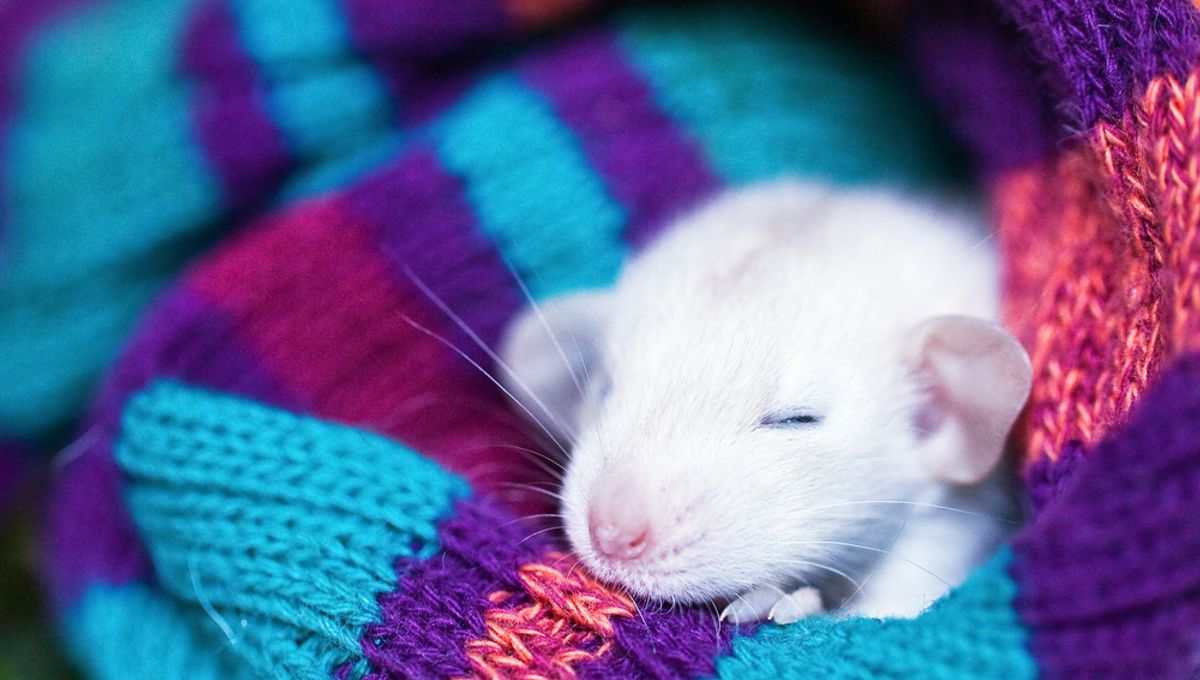
If, in the depths of winter, when the nights draw in and the temperature drops all the way down to “screw this” degrees, you’ve ever found yourself wondering why humans can’t just make like so many chomnky bears and spend the whole season snuggled up in bed, then believe us: you’re not alone. So, a new result published today might be just the pick-me-up you need next time you find yourself reaching for a sweater.
By pelting rodents’ heads with ultrasound pulses – a procedure that is not as traumatic as it sounds, we promise – scientists from Washington University in St. Louis have managed to induce a reversible hibernation-like state in mice and rats known as torpor, marking what may be a major step towards potential human applications in future.
Dubbed “ultrasound-induced hypothermia”, or UIH, the technology “represents a significant technological advancement in evoking artificial torpor,” according to a video from the team which accompanies the study.
But despite this leap forward, there’s still a small element of mystery to the breakthrough. For many reasons, “ultrasound [is] a promising technology for neuromodulation in small animals, non-human primates and humans,” the authors note – it’s the only energy form strong enough to penetrate the skull without ionizing radiation and target brain areas with millimeter precision, for example, as well as being portable, safe, and relatively cheap.
There’s just one problem, really: until now, we haven’t exactly understood how it works – or, as the researchers put it in more scientific terms, “its mechanism remains elusive.”
With the new study, however, we’ve gained a lot of insight. The technique works by aiming ultrasonic pulses at a region of the brain known as the preoptic area, or POA, resulting in the activation of neurons that trigger features of torpor such as reduced metabolic rate and body temperature. The effect was almost instant: after a 10-second blast with ultrasonic pulses, mice experienced decreased heart activity, lower oxygen consumption, a switch from sugar to fat metabolism, and changes in body temperature that suggested active heat dumping – all features of naturally-occurring torpor.
At first, this temporary torpor didn’t last longer than a couple of hours – barely a cat (or mouse) nap, really. But the team had another trick up their sleeve: they developed a closed-loop feedback controller that could automatically activate the ultrasonic beams whenever the mice’s body temperatures rose above 34°C (93.2°F) – the threshold for natural torpor in the species.
With this neat little addition, the researchers were able to keep the mice in their torpor-like state for up to 24 hours – all without any signs of damage or discomfort. Altogether, the technique “reveals the great potential of ultrasound-brain interfacing technology for noninvasive, precise induction of UIH,” the study reports.
But there’s another, even more tantalizing, detail to the study. Not only did the researchers manage to induce a torpor-like state in mice, but they were also able to reproduce the effects in 12 rats – a species which doesn’t naturally hibernate at all.
It’s a result that raises some intriguing possibilities. If torpor can be induced in rats, could this technique be successful in humans, too? There are plenty of reasons why we’d want to try it – and not just as an excuse for more duvet days in winter.
“The concept of inducing torpor-like hypothermia and hypometabolism by artificial means was initially proposed in 1960 […] to reduce energy consumption during long-term human spaceflight,” point out the researchers. “Torpor-like hypothermia and hypometabolism could also increase the survival probability of patients under life-threatening conditions […] by slowing metabolism and disease progression.”
So far, though, the technology to do it – at least, in a noninvasive and safe way – has eluded us. With the development of their new technique, therefore, the researchers at Washington University and their sleepy rodent pals may have broken through a barrier not just in biology, but in physics and engineering too.
“As ultrasound neuromodulation has already been demonstrated to be feasible in humans, UIH has excellent promise for translating to humans,” the researchers conclude. “UIH may unlock applications ranging from new medical treatments to long-duration human spaceflight.”
The study is published in the journal Nature Metabolism.
Source Link: It's Possible To Create A Hibernation-Like State By Pinging Ultrasound At The Brain